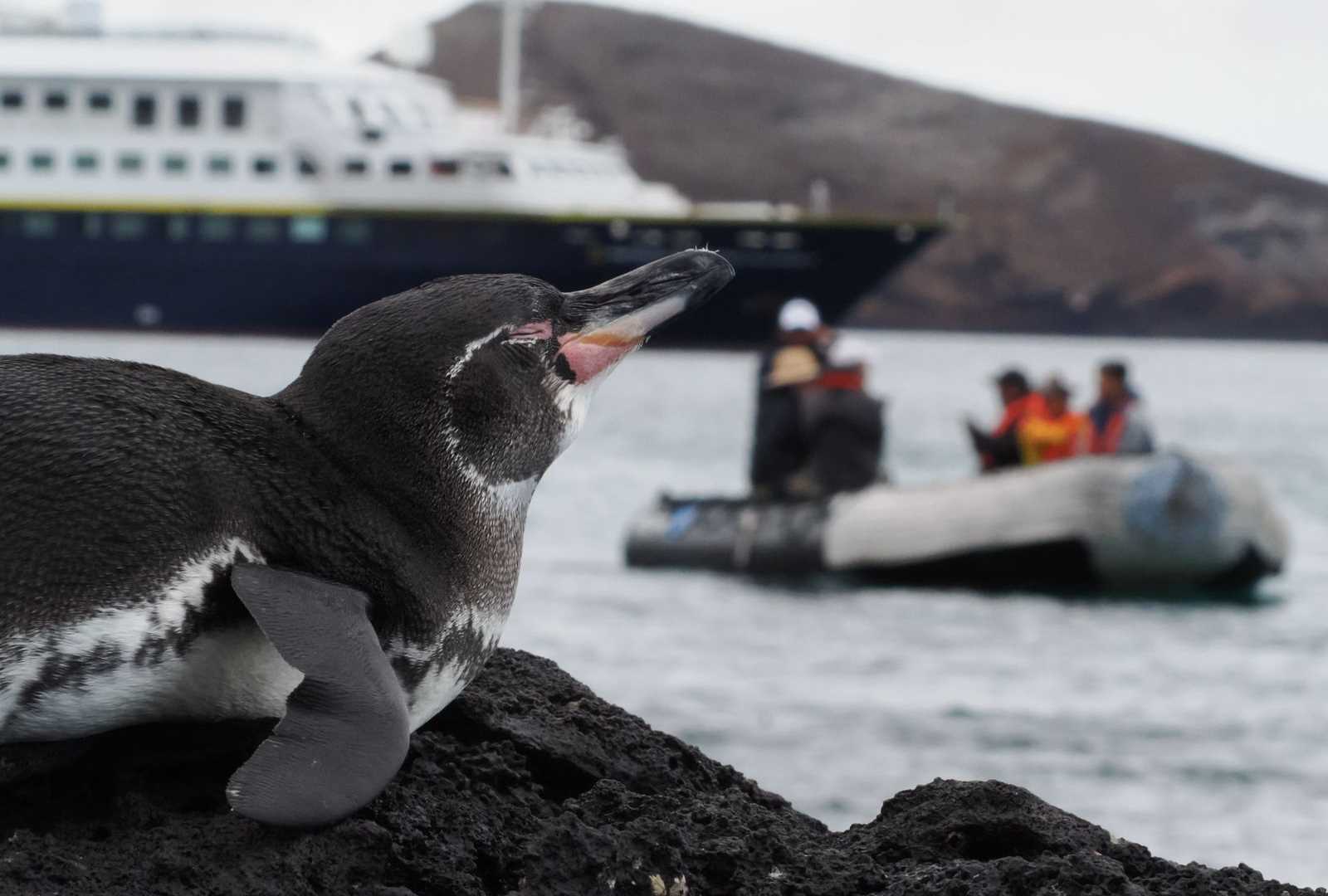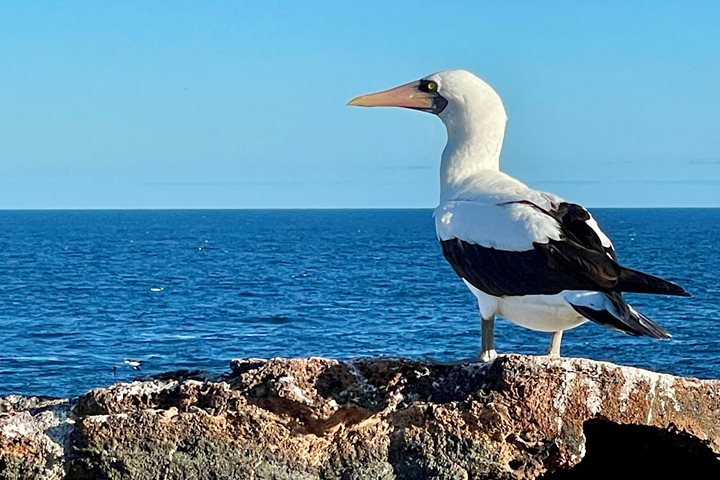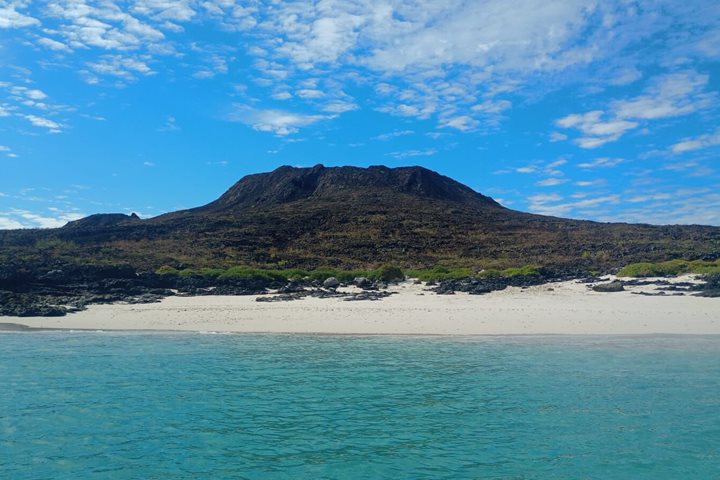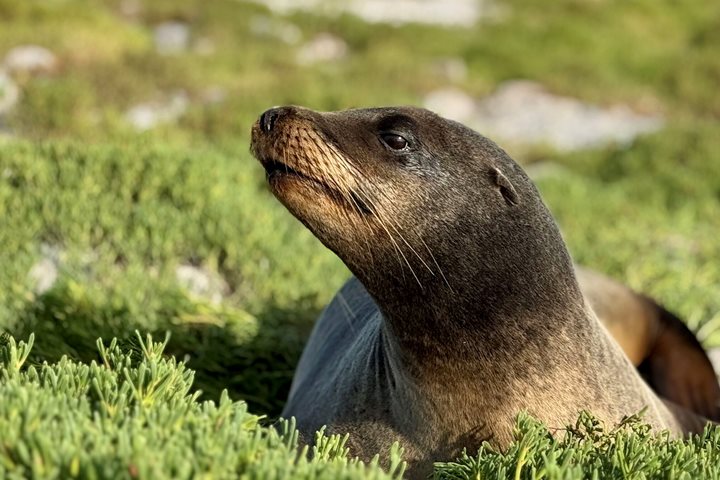Today we started our expedition early in the morning as the sun rose. It was amazing to be in our kayaks with sea lions along the coast of Sombrero Chino, a Chinese hat-shaped, very small island with lava flows dating back to 19th century.
As soon as we finished this activity, a delicious breakfast was waiting for us so we could replenish our energy to continue with our adventures. Snorkeling was especially amazing today as we swam with sea lions, sharks, and of course, the wonderful Galapagos penguin.
In the afternoon, we sailed towards Sullivan Bay at Santiago Island, a stunning volcanic landscape with solidified lava formations. After a dry landing, we walked on this lava flow looking for unique volcanic formations and taking photos, ending a fantastic day in the Galapagos Islands.







